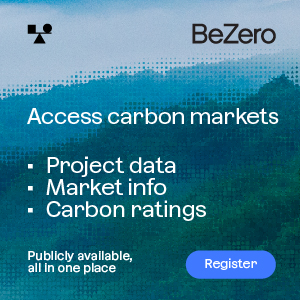Washington’s Department of Ecology on Wednesday released details of the US state’s proposed carbon market, potentially opening the door to the use of allowances and offsets from other North American emissions trading schemes while limiting trade to operators.
If approved, the scheme will be the centrepiece of state efforts to force its largest emitters, including power plants, metal manufacturers, natural gas distributors, petroleum fuel producers and importers, waste facilities and other large industrial polluters, to cut their output to help Washington halve its GHGs from 1990 levels by 2050.
The measures are expected to initially affect around two dozen installations, which collectively account for around 60% of the state’s emissions.
Those numbers may rise to more than 60 plants in the years to come, making up at least 65% of the state’s GHGs, a spokeswoman with the department told Carbon Pulse.
The proposed scheme, set to run in three-year compliance cycles from 2017, differs from other cap-and-trade systems in many respects.
Installations will receive no allowances upfront, but rather earn tradable emission reduction units for cutting against established baselines, which would be set using operator emission levels from at least three years between 2012 and 2016.
The number of installations covered by the system would grow over time as the threshold for coverage drops by 5,000 metric tonnes every three years, declining from 100,000 tonnes a year in 2017-2019 to 70,000 tonnes from 2035.
Voluntary participation will also be allowed.
According to the draft rules, instead of receiving a predetermined allowance quota, installations will be assigned an emissions reduction pathway, representing an annual decrease of 1.66% from a set baseline, or 5% every three years.
Companies will need to report their emissions annually but will only need to comply at the end of each period, with compliance reports requiring third-party verification.
COMPLIANCE
Installations that fail to meet their targets may purchase reduction units generated within the state, or from “emission credit programs, registries, or exchanges not operated or managed by the state of Washington.”
The proposal opens the door to reduction units derived in Washington from low-carbon transportation, livestock and agriculture methane capture projects, energy efficiency initiatives, burning wood-based biomass instead of fossil fuels, and other measures involving emissions cuts in the industrial, water and wastewater sectors.
It also specifically identifies emissions allowances from RGGI, California and Quebec as being eligible for compliance, in addition to certified offsets from livestock, mine methane and ozone depleting substance projects in California.
The rules suggest that exchange-based trading of Washington units is unlikely to be permitted, and that intermediaries such as banks or brokers may facilitate trade but “at no time may … report that they themselves are retaining [the] units.”
According to the proposal, trading of the units may only take place between covered entities and requires documentation of the exchange “to demonstrate a clear and unambiguous transfer … from one covered party to another”.
The rules also allow for the unlimited banking of unused allowances from one phase to the next, but propose that all units face a 10-year usage life that starts from the first time they’re banked.
Four public hearings have now been scheduled over the proposal, with a finalised plan expected by this summer.
TARGETS
The latest proposal comes after Governor Jay Inslee last summer directed the Department of Ecology to strengthen existing rules and set GHG limits under the state’s Clean Air Act in order to meet the emissions reduction targets passed by Washington’s legislature in 2008, which included the 2050 emission goal.
The state has also pledged to bring its GHG emissions back to 1990 levels by 2020, and to cut them by 25% by 2035.
Under the US EPA’s Clean Power Plan rules, and despite having amongst the lowest levels of carbon intensity in its power generation in the entire US, Washington will have to cut its emissions by 70% below 2005 levels by 2030 – more than any other state.
This is in part due to an existing plan to phase out by 2025 Washington’s Centralia plant, the state’s only remaining coal-fired power station, which provides around 70% of the state’s electricity needs.
Centralia is not included in the latest proposal because its decommissioning has already been scheduled.
CARBON TAXES
Wasington’s latest proposal already faces competition from two separate initiatives to lower the state’s GHGs by putting a price on carbon.
In one effort, backers of Initiative-732 last month turned over 350,000 signatures supporting a proposal to tax CO2 at $25/tonne while offsetting the burden on consumers by lowering other state taxes.
That measure will seek approval either through the state legislature or via the ballot box in November’s nationwide elections.
Another group of environmental, labour and social justice groups is leading a separate push to enact a different state-wide carbon tax.
By Alessandro Vitelli and Mike Szabo – mike@carbon-pulse.com



